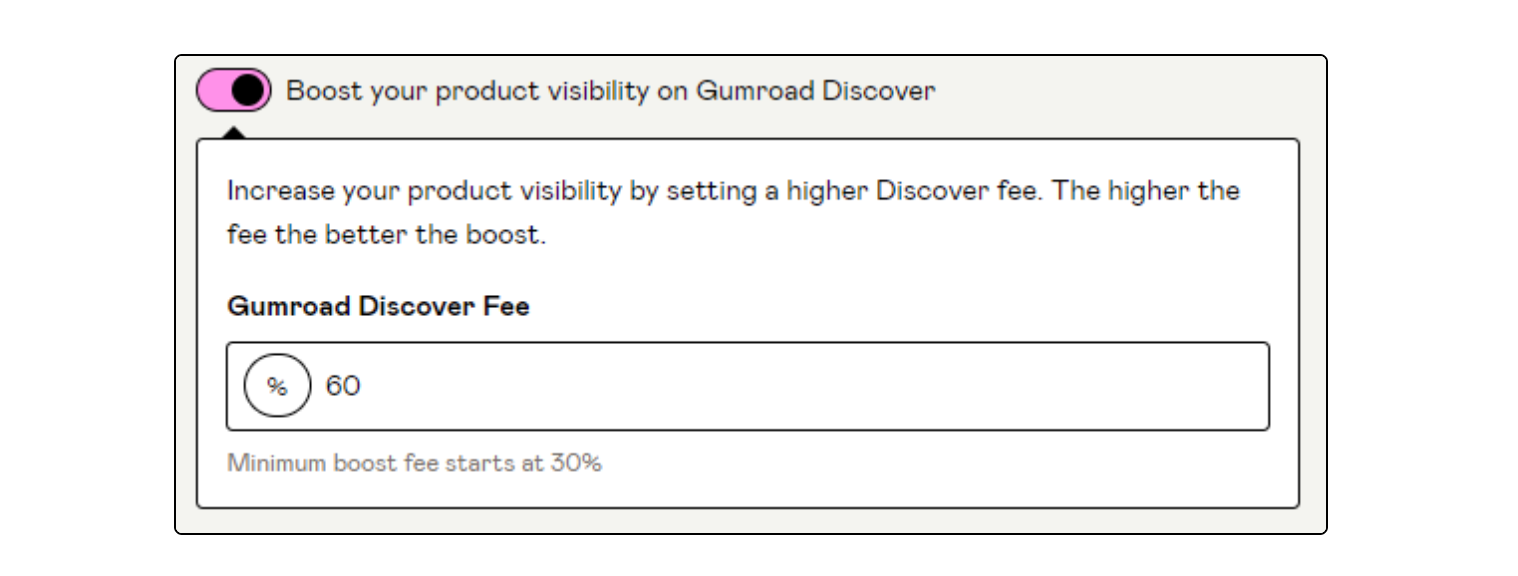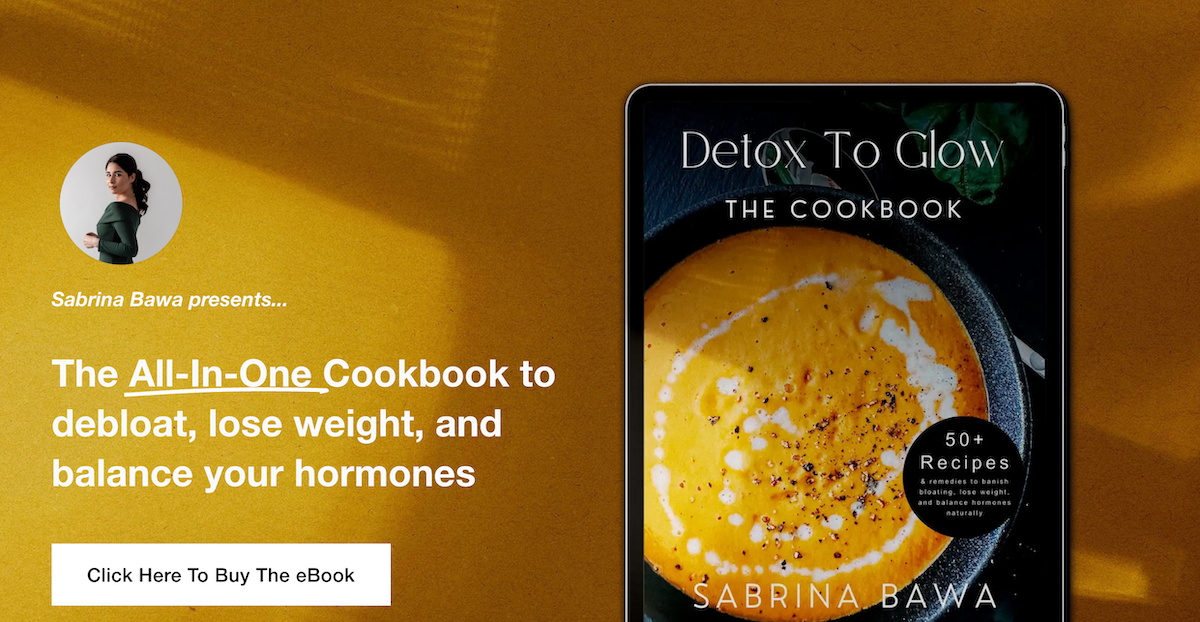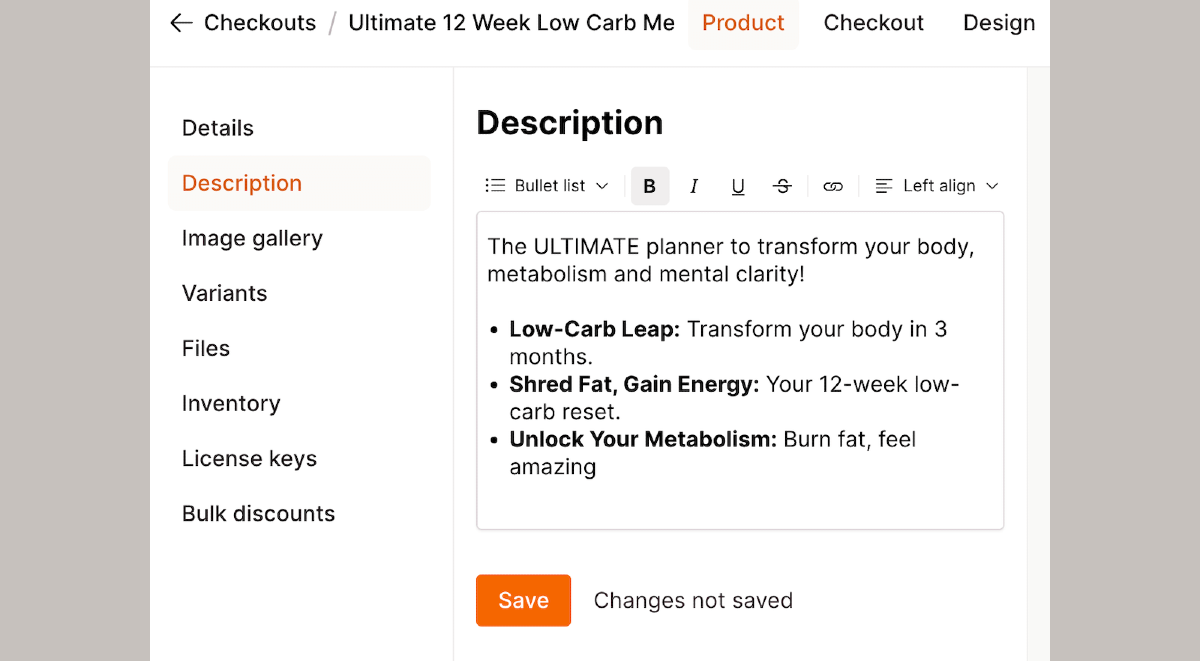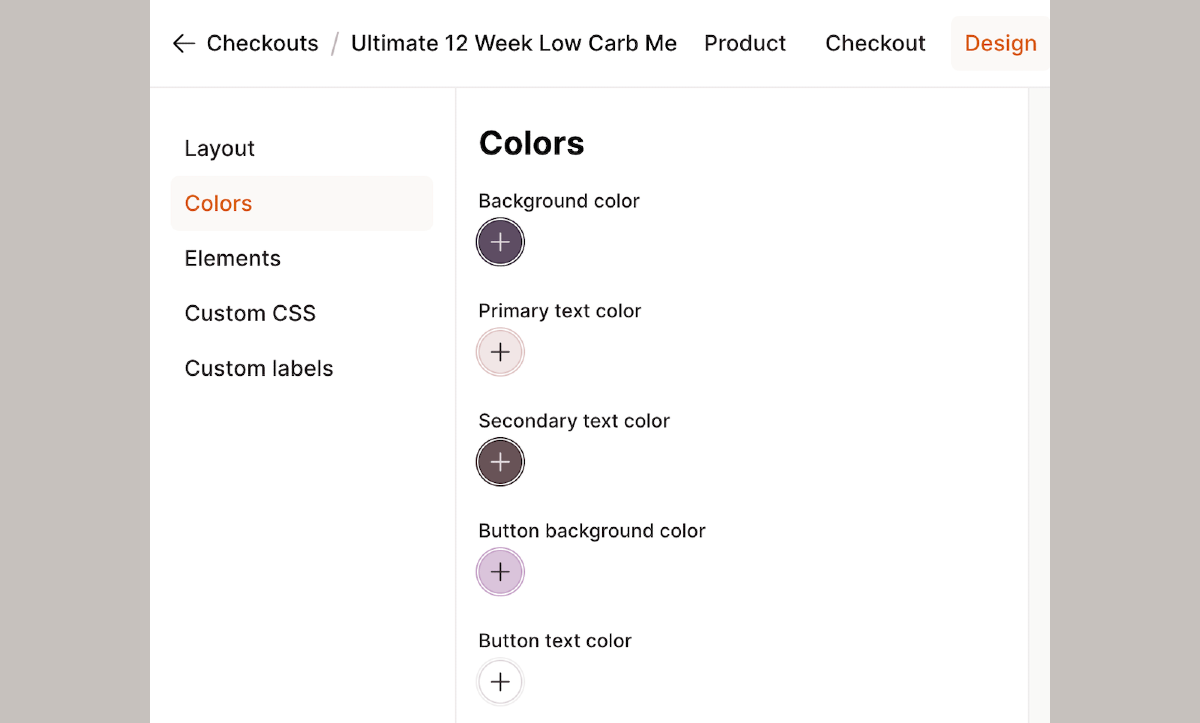Are you an entrepreneur looking for the best platform to sell digital products and searching for one that will support your growth without eating into your profits?
You're likely aware of Gumroad's popularity as a digital marketplace. You might also have heard that they've had a bit of controversy around their fees.
As a marketplace, Gumroad can help you get your products in front of an audience—but if you have already built one (or even if not!)—are Gumroad's fees worth it?
We're skeptical, and we'll be explaining why.
Below, we cover the Gumroad fees increase, the platform's features, and its new pricing structure.
We'll also compare three Gumroad alternatives—Etsy, Checkout Page, and Lemon Squeezy—and help you find out if they are a better fit for your business.
Gumroad's pricing changes
Gumroad, the well-known marketplace celebrated for its simplicity in selling digital products such as courses, ebooks, music software, and various other digital download products, raised its fees in late 2022 to simplify its pricing.
The Gumroad pricing increase caused quite a stir amongst customers—in part due to the platform’s communication around the hike—but mostly due to the extent of the rise.
The decision left many creators feeling angry and frustrated, and re-evaluating their options. For high-revenue sellers, profits were affected significantly — some seeing themselves shoot from a 2.9% sales fee to a 10% fee overnight.
User Rikschennink posted on indiehackers.com

What is Gumroad?
Gumroad is an e-commerce platform designed for creators to directly sell digital products, memberships, and physical goods to their audience. Known for its user-friendly interface, Gumroad helps creators monetize their work with features like customizable storefronts, email marketing, and analytics.
Gumroad pricing includes a transaction fee for each sale. This is standard practice among similar platforms, although many others have a tiered structure based on volume of sales — meaning the more you sell, the less you pay in fees as a percentage of your sales.

Who are Gumroad's target users?
Gumroad caters to many creators and entrepreneurs who sell digital products and services.
- Educators and course creators: Distribute online courses, manage student relationships, and streamline marketing.
- Filmmakers, musicians, and bands: Sell films, music, and merchandise directly to fans.
- Fitness trainers: Offer digital workout plans, courses, and guides to clients through personalized digital content.
- Podcasters and authors: Monetize audio content and e-books effectively.
- Software developers: Sell applications and digital tools directly to users.
- Visual artists: Showcase and sell their artwork online.
Gumroad fees and pricing structure
Gumroad charges a flat 10% fee per transaction on their platform. In addition, card processing fees are taken by payment providers like Stripe and PayPal. This usually stands at around 3.49% plus $0.49 for a transaction within the U.S.
For sellers, the primary benefit of using a platform that charges a flat % fee on sales is that it’s low commitment — you don't pay unless you earn.
This means that creatives can have a long tail of products online at no cost until they make sales.
For a moderately priced digital product such as a fitness planner selling at $40 on Gumroad, the fee breakdown would be as follows:

- Sale: Digital planner for $40
- Gumroad Fees: $4 (10% of $40)
- Payment Processing Fee: Approximately $1.89 (3.49% of $40 + $0.49)
- Total Fees: $5.89
💰 Following these deductions, you would receive approximately $34.11 from your $40 sale.
This might feel OK if you are selling a few products now and then and prefer not to pay a monthly fee, but let’s take a look at the picture once we start to scale up the sales of this $40 fitness planner:
| No. of Sales | Revenue | Gumroad Fees | Card Processing (3.49% + $0.49 per transaction) | Total Fees | Profit |
|---|---|---|---|---|---|
| 1 | $40.00 | $4.00 | $1.89 | $5.89 | $34.11 |
| 10 | $400.00 | $40.00 | $18.86 | $58.86 | $341.14 |
| 100 | $4,000.00 | $400.00 | $188.60 | $588.60 | $3,411.40 |
| 1000 | $40,000.00 | $4,000.00 | $1,886.00 | $5,886.00 | $34,114.00 |
| 10000 | $400,000.00 | $40,000.00 | $18,860.00 | $58,860.00 | $341,140.00 |
Yup! When you put it like that it’s no surprise that so many customers were very unhappy with these changes.
As your business gains success and you start to make more sales, Gumroad’s fees stack up to shocking heights.

Gumroad’s Discover fee boost
Gumroad's high fees don’t stop at the 10% flat sales fee! They want to charge you even larger fees—upward of 30%—to use their ‘Discover’ feature that enables you to boost your product in the rankings and get better visibility on the platform.
The minimum boost is 30%, and the higher you are willing to go from there, the better the visibility of your product. The fee is only charged if a sale is made.
This feature presents another interesting option for sellers looking to get more visibility and are willing to pay the price!

What are cheaper alternatives to Gumroad?
Platforms like Etsy, Checkout Page, and Lemon Squeezy are alternatives to Gumroad that charge lower fees.
To accommodate different sellers’ needs, it’s common for platforms to offer tiered pricing and fee structures with varying costs, fees, and benefits.
Depending on your requirements, it’s worth spending some time reviewing what different platforms have to offer.
We’re going to review these worthy alternatives below that could save you money compared with Gumroad.
Etsy: A cheaper alternative to Gumroad?
Etsy is a cheaper alternative to Gumroad and a household name in the digital marketplace sphere, specializing in handmade and vintage goods as well as digital products, like wall art, planners, and more.
With the same fitness planner selling at $40 on Etsy, the fee breakdown would be as follows:

- Sale: Digital planner for $40
- Etsy Fees: $2.80 (6.5% of $40 + $0.20 listing fee)
- Payment Processing Fee: Approximately $1.45 (3% of $40 + $0.25)
- Total Fees: $4.25
💰 Following these deductions, you would receive approximately $35.75 from your $40 sale.
🛒 If you are based in the US and selling a digital fitness planner for $40 on Etsy, the scaling would look like this:
| No. of Sales | Revenue | Etsy Fees | Payment processing | Total Fees | Profit |
|---|---|---|---|---|---|
| 1 | $40.00 | $2.80 | $1.45 | $4.25 | $35.75 |
| 10 | $400.00 | $28.00 | $14.50 | $42.50 | $357.50 |
| 100 | $4,000.00 | $280.00 | $145.00 | $425.00 | $3,575.00 |
| 1000 | $40,000.00 | $2,800.00 | $1,450.00 | $4,250.00 | $35,750.00 |
| 10000 | $400,000.00 | $28,000.00 | $14,500.00 | $42,500.00 | $357,500.00 |
These numbers show us that Etsy’s fees are cheaper than Gumroads for a listing within the USA.
Let’s start to build a side-by-side comparison of our digital planner seller’s profits when selling upward of 100 units on each platform:
| No. of Sales | Revenue | Gumroad profit | Etsy profit |
|---|---|---|---|
| 100 | $4,000.00 | $3,411.40 | $3,575.00 |
| 1000 | $40,000.00 | $34,114.00 | $35,750.00 |
| 10000 | $400,000.00 | $341,140.00 | $357,500.00 |
Etsy has won out, but let’s look at another alternative.
Checkout Page as a cheaper alternative to Gumroad!
Checkout Page does things differently. Instead of paying high transaction fees that mean you never know how much you will pay each month, we charge a low fixed monthly subscription plan with no transaction fees — making it easy for you to work out your costs, optimize your pricing, and manage your business.
Partnering with Stripe, the Checkout Page allows you to take payments from customers hassle-free — allowing them to buy eBooks, courses, templates, subscriptions, and more from you.
Checkout Page accepts one-time payments, subscriptions, or "pay what you want" options.


We offer 3 different tiers of subscription:
| Account Tier | Monthly Cost | If Billed Annually | Platform Fees | Sales Per Month |
|---|---|---|---|---|
| Launch | $29 | $290 | 0% | Up to $3k |
| Grow | $99 | $990 | 0% | Up to $10K |
| Scale | $239 | $2390 | 0% | Up to $30K |
Let’s take a look at the fees and profits for our fitness plan seller if they were to use Checkout Page:
| No. of Sales | Revenue | Subscription Fee | Stripe Processing (2.9% + $0.30 per transaction) | Total Fees | Profit |
|---|---|---|---|---|---|
| 1 | $40 | $29.00 | $1.46 | $30.46 | $9.54 |
| 10 | $400 | $29.00 | $14.60 | $43.60 | $356.40 |
| 100 | $4,000 | $99.00 | $146.00 | $245.00 | $3,755 |
* Note: As it's tricky to directly compare volume-based pricing with fixed monthly pricing tiers, in this example, we’ve used the monthly fee for the 1 - 100 sales units, then moved to the yearly subscription cost on the applicable bracket for the larger volume sales
As you see, with Checkout Page, it's much easier to predict your monthly costs, and the platform doesn't take a huge percentage of your profits as you grow.
Let’s take another side-by-side look at the earnings for the digital planner on Gumroad, Etsy, and Checkout Page:

| No. of Sales | Revenue | Gumroad profit | Etsy profit | Checkout Page profit |
|---|---|---|---|---|
| 100 | $4,000.00 | $3,411.40 | $3,575.00 | $3,755 |
| 1000 | $40,000.00 | $34,114.00 | $35,750.00 | $37,550 |
| 10000 | $400,000.00 | $341,140.00 | $357,500.00 | $375,500 |
As we can see here, our seller’s profits are looking healthiest with Checkout Page. Let’s explore another contender next!
Lemon Squeezy: A cheaper alternative to Gumroad?
Lemon Squeezy is a dynamic e-commerce platform that charges lower fees than Gumroad. It is focused on helping creators sell their digital products, offering a streamlined platform for managing digital downloads, subscriptions, and software licenses.
Lemon Squeezy has a relatively simple fee structure at first glance — charging a flat 5% + 0.50¢ on each sale made through the platform.

Beyond this, there are some extra ‘hidden’ fees that can take sellers by surprise:
➕1.5% for international (outside of the US) transactions
➕1.5% for PayPal transactions
➕0.5% for subscription payments
💰When it comes time to payout time, Lemon Squeezy pays out twice per month, and these payouts attract additional fees:
Payouts via Stripe: 0.5% + $2.50 per payout for bank accounts in the US and 2.5% + $2.50 per payout outside the US.
Payouts via PayPal: A flat fee of $0.50 per payout for accounts in the US and 3% capped at $30 per payout for accounts outside the US.
Let’s take a look at how our seller fares on Lemon Squeezy!
In this example, we have assumed standard US card transactions for 50% of the sales with the 5% platform fee and either PayPal or overseas transactions for 50% of the sales, attracting a 6.5% fee.
| No. of Sales | Revenue | Lemon Squeezy Fees | Stripe Payout Cost US | Profit |
|---|---|---|---|---|
| 1 | $40.00 | $2.50 | $2.69 | $34.81 |
| 10 | $400.00 | $23.00 | $4.39 | $372.62 |
| 100 | $4,000.00 | $230.00 | $21.35 | $3,748.65 |
| 1000 | $40,000.00 | $2,300.00 | $191.00 | $37,509.00 |
| 10000 | $400,000.00 | $23,000.00 | $1,887.50 | $375,112.50 |
* This is for a single transaction within the US that does not use PayPal or subscription payments.
**These numbers may differ slightly depending on the number of payouts over time, with each payout costing $2.50. We’ve assumed two payouts per month for the higher volume sales.
The results are in!

Let’s review Gumroad profits for our seller, side-by-side with Etsy, Checkout Page, and Lemon Squeezy:
| No. of Sales | Revenue | Gumroad profit | Etsy profit | Checkout Page profit | Lemon Squeezy Profit |
|---|---|---|---|---|---|
| 100 | $4,000.00 | $3,411.40 | $3,575.00 | $3,755 | $3,748.65 |
| 1000 | $40,000.00 | $34,114.00 | $35,750.00 | $37,550 | $37,509.00 |
| 10000 | $400,000.00 | $341,140.00 | $357,500.00 | $375,500 | $375,112.50 |
When all is said and done, our seller pockets more money with Checkout Page than other platforms.
Based on an average of 100 sales, your profits would be almost 10% higher with Checkout Page than Gumroad - and with high volume sales, that really adds up!

Percentage vs subscription-based pricing: Pros & cons
The platforms we’ve focused on in this article have different pricing models. Checkout Page uses subscription-based pricing, and Etsy, Gumroad, and Lemon Squeezy use percentage-based pricing.
Depending on various factors — e.g., sales volume and how far along you are in your digital product sales journey — each model has its pros and cons.
Let’s take a look at those together.
Percentage-based pricing charges a commission fee as a percentage of each sale you make.
Pros:
- Cost-effective for low sales: You only pay when you make a sale, minimizing financial burden during slow periods.
- Scalable fees: Commission fees directly reflect your sales volume, ideal for businesses with fluctuating sales patterns.
- Potential for higher profits: Selling high-value items can translate to larger profits compared to a fixed subscription fee.
Cons:
- Discourages high-volume sales: Selling a large number of items can lead to significant commission fees eating into your profits - as we have seen!
- Limited platform features: Subscription plans often offer additional features like product listing prioritization or marketing tools, which might be unavailable under pure commission.
- Unpredictable expenses: You’ll end up paying a different amount each month
Subscription pricing charges a fixed monthly fee for access to the platform's features.
Pros:
- Predictable expenses: Provides budgeting stability regardless of monthly sales volume.
- Encourages listing diverse products: Subscription fees are not tied to individual sales, allowing you to experiment with a wider product range.
- Potential access to additional features: Subscription plans often unlock premium features that can boost product visibility and sales.
- Discounts on annual plans: Subscription plans often offer a yearly discount, which can significantly lower the fees you’ll pay if you use the product for a longer term.
Cons:
- Fixed cost even during slow periods: You'll pay the subscription fee even during months with minimal sales.
- Potential upfront financial strain: The fixed fee can be a barrier to entry for new sellers or those with limited resources.
- May not be cost-effective for low-volume sellers: If your sales volume is consistently low, the subscription fee might outweigh the benefits of the platform.
As we saw in the case study with the digital planner, if you are selling in low volumes or are just starting out and wanting to test the waters with different products, percentage-based costs can be appealing, and there is no fear of your subscription cost going to waste.
As soon as sales start to pick up in volume however, this balance can quickly shift.
Building your own website as a cheaper alternative to Gumroad
For many entrepreneurs venturing into the world of digital products or moving their existing venture into high-volume sales, creating a website can be a powerful move.
If you are feeling intimidated by the process or the costs of hiring someone to do it for you, platforms like Webflow and Framer offer user-friendly interfaces to help you along the way!
Having your own website gives you:

- Complete creative control: Showcase your products and brand story exactly as you envision them.
- Direct audience engagement: Build deeper connections and foster a loyal community — with no marketplace to stand between you and your customer relationships.
- E-commerce freedom: Integrate with a payment processor of your choice or make the most of single product checkout pages, which you can launch from your website.
Your own website can really empower you to build your brand on your terms — leaving you free to build a thriving community around your digital products.
To learn more about where to sell digital products, read The 18 best websites to sell digital products in 2024
How to sell digital products online with Checkout Page
One of the best things about Checkout Page is that it allows you to sell your digital products online from pretty much anywhere! Single product checkout pages are shared as hosted links from websites, social media bios, blogs, and community forums or embedded on web pages with a few clicks.
Let’s take a step-by-step look at how our digital planner creator could start selling with Checkout Page in a matter of minutes:
Step 1. Start by creating your page, where you can title your product and select from a number of pricing options:

Step 2. Select the page type that suits you, either a hosted standalone page or a page you can embed into your website:

Step 3. Add a description to your product to display on your Checkout Page:

Step 4. Add a main product image to your page:

Step 5. Add the digital product files that your customers will be downloading from you on purchase:

Step 6: Checkout Page offers you a number of ways to design and customize your page’s colors, elements, and CSS:

Step 7: There are many ‘After Payment’ options for customizing the important post-purchase experience, such as adding a ‘One Click Upsell’ boost to your orders.

Step 8. Checkout Page shows you your handy work in a preview pane as you go!

Step 9: When you are ready to go, you can share the link to your Checkout Page, as well as create QR codes and Embed code:

And with that, you are already off to a flying start — a fully fledged product page ready to promote to and share with your audience, all created in minutes.
Conclusion
In this article, we’ve looked at Gumroad's pricing increase and the financial impact it has on sellers, particularly high-volume ones.
We’ve taken a look at the costs and fees associated with some of the most popular Gumroad alternatives and highlighted that Checkout Page is a fantastic option if you want to maximize what you pocket after making sales online.
We’ve also taken a glance at the pros and cons of percentage-based pricing vs subscription pricing when considering a platform and the benefits of setting up your own website to sell your digital products.
Lastly, we’ve walked through the process of selling a digital planner on the Checkout Page!
If you think Checkout Page could be a good fit for you, try us out with our 7-day free trial - no credit card needed!
Looking to dive deeper into the world of digital products and boost your sales as a business or side hustle? Check out our dedicated blog articles on all aspects of digital product sales.




